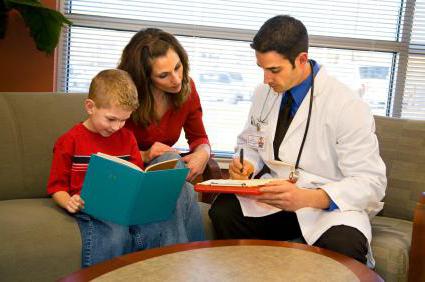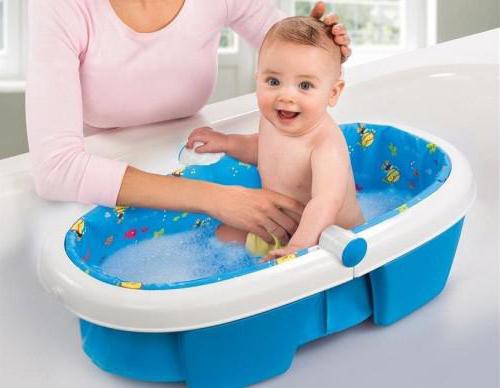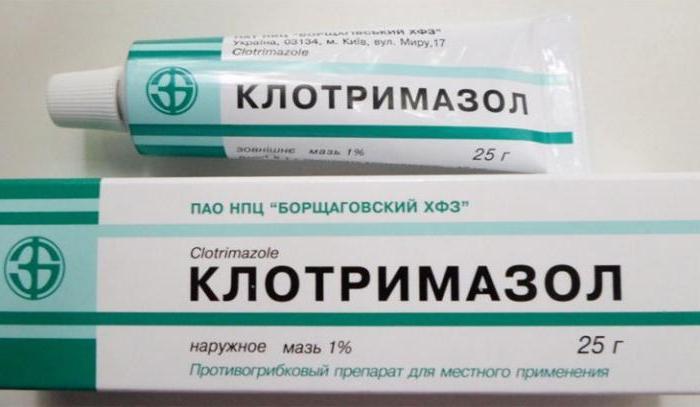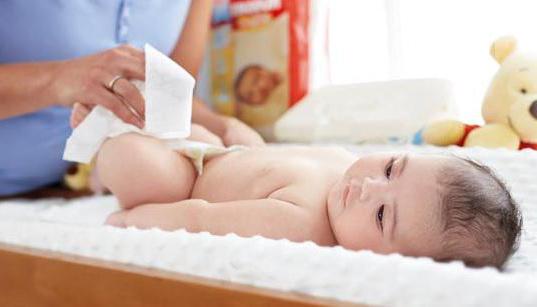Hyperemia of the foreskin in a child. Balanitis in children: causes. Treatment of balanitis in children at home
When married couple When her son is born, she is forced to deal with many specific diseases. One of them is balanitis in a child. In most cases, the pathology is fungal in nature. Its main symptom is inflammation of the skin on the head of the penis. Such an unpleasant problem requires a serious approach to therapy and cannot be avoided without the use of special drugs. Today’s article will discuss how to treat balanitis in children.
A dermatologist or urologist may perform a biopsy to help confirm or rule out a diagnosis of penile cancer or specific balanitis. A dermatologist can identify allergic contact dermatitis by patch testing. Ulceration, urethritis or inguinal lymphadenopathy.
What prescriptive issues should be considered when prescribing topical imidazoles?
Ulceration, urethritis, or inguinal lymphadenopathy may indicate a sexually transmitted infection and require evaluation and management by a genitourinary medicine specialist. Persistent or recurrent balanitis. Specialist advice should be sought to rule out underlying balanitis and advise on further management. British national formulary. Instruct the person to apply clotrimazole cream to the affected area 2 to 3 times daily for at least 2 weeks. A strip of cream about one and a half centimeters long is enough to cover an area the size of your hand. Due to the fact that clotrimazole can damage latex contraceptives, thereby reducing its effectiveness. Advise alternative contraceptive measures for at least 5 days after using clotrimazole. Reverse reactions include local skin irritations such as rash, itching, swelling and peeling of the skin. Instruct the person to apply miconazole cream to the affected area twice daily. Latex contraceptives - Miconazole may harm latex contraceptives. Advise alternative contraceptive precautions for at least 5 days after miconazole use. Conventional anticoagulants, systemic miconazole, are known to interact with oral anticoagulants. Due to the limited systemic availability of topical drugs, clinically significant interactions are rare; however, the manufacturer of miconazole recommends caution and monitoring for anticoagulant effects when miconazole and an oral anticoagulant are used concomitantly. Instruct the person to apply econazole cream to the affected area once daily for at least 14 days. Indicate the person from the following interactions: Latex contraceptives - Econazole may cause damage to latex contraceptives and may inactivate spermicidal contraceptives. Advise alternative contraceptive precautions for at least 5 days after using econazole. Oral anticoagulants - Systemic econazole is known to interact with oral anticoagulants. Due to the limited systemic availability of topical drugs, clinically significant interactions are rare; however, the manufacturer of econazole recommends caution and monitoring for anticoagulant effects during concurrent use of econazole and an oral anticoagulant. Ketoconazole is licensed for the treatment of dermatophyte skin infections, including cutaneous candidiasis in adults. Encourage the person to apply ketoconazole cream to the affected area once or twice daily. Treatment should be continued for several days after the lesions disappear.
What prescriptive issues should be considered when prescribing oral fluconazole?
However, in clinical practice, only isolated case reports have documented this phenomenon. The manufacturer recommends frequent monitoring of blood glucose and appropriate reduction of the sulfonylurea dosage during coadministration.What are the contraindications and precautions for flucloxacillin
Do not prescribe flucloxacillin to people with: true hypersensitivity to penicillin. Gastrointestinal side effects do not in themselves constitute a penicillin allergy. Safety Committee medicines warns that flucloxacillin is associated with hepatitis and cholestatic jaundice. The onset of hepatic reactions may be delayed for several weeks after discontinuation of flucloxacillin treatment. These reactions are not related to the dose or route of administration of flucloxacillin. Risk factors include treatment for more than 2 weeks and age. Hypersensitivity to cephalosporins - There is some clinical and laboratory evidence of partial cross-allergenicity between penicillins and cephalosporins, and people are known to have severe reactions to both drugs. Sharp deterioration: Consider dose reduction or reduced dosing interval of flucloxacillin in severe renal impairment due to the risk of neurotoxicity.What are the key side effects associated with flucloxacillin and how to manage them
If this occurs, stop using flucloxacillin and give appropriate treatment. What are the key interactions associated with flucloxacillin? Anticoagulants - Monitor prothrombin time or international normalized ratio more closely with the addition or removal of penicillin, as anticoagulant dosage adjustments may be necessary. Prolongation of prothrombin time has been reported in people taking penicillins and warfarin concomitantly. Although there is no evidence, it is believed that food may reduce the absorption of flucloxacillin.Erythromycin and clarithromycin
Contraindications and warnings. What are the contraindications and precautions for erythromycin and clarithromycin. Prescribe erythromycin and clarithromycin with caution in people with: impaired liver function - erythromycin and clarithromycin are primarily cleared from the body by the liver.What are the key side effects associated with erythromycin and clarithromycin and how to manage them
Clarithromycin is better tolerated than erythromycin, but nausea, vomiting, or diarrhea may occasionally occur. Consider pseudomembranous colitis if a person develops severe diarrhea during or after treatment with erythromycin or clarithromycin. If pseudomembranous colitis is suspected, stop treatment and admit the person. Erythromycin may cause loss of appetite, stomach cramps, and decreased liver function. Clarithromycin may cause stomach pain, abnormal taste, upset stomach, and headache. Severe diarrhea during or after antibiotic treatment may be a sign of pseudomembranous colitis. It often follows antibiotic treatment and is usually acute in onset but can become chronic.What are the key interactions associated with erythromycin and clarithromycin?
Key interactions involve erythromycin, and clarithromycin includes: Antimalarials - Avoid concomitant use with macrolides due to the possible risk of ventricular arrhythmias. Antipsychotics - The manufacturers of droperidol, cyclopenthixol, amisulpride, clozapine, pimozide and quetiapine recommend avoiding use with macrolides as they may increase the risk of ventricular arrhythmias. Minophylline or theophylline - Check theophylline levels 48 hours after starting erythromycin and adjust the dose accordingly. However, advise the person to report any muscle pain, tenderness, or weakness. Oral hypoglycemic drugs - Hypoglycemia has been observed with concomitant use of clarithromycin with insulin and other oral hypoglycemic drugs. Phenytoin and valproate - Increased levels of phenytoin and valproate have been found with concomitant use of clarithromycin. Serum level determination is recommended for these drugs when used concomitantly with clarithromycin. Colchicine - Increased levels of cholchicine have been found with concomitant use of clarithromycin. Antidiabetic drugs and insulin - Concomitant use of clarithromycin and antidiabetic drugs may lead to significant hypoglycemia. Monitor blood glucose levels more regularly and adjust the antidiabetic drug dose accordingly.What are the contraindications and precautions for metronidazole
Therefore, people with Cockayne syndrome should consult a specialist before prescribing metronidazole. What are the key side effects associated with metronidazole and how to manage them. Common side effects include a metallic taste and gastrointestinal irritation.What are the key interactions associated with metronidazole?
Drug interactions Alcohol - Some people taking oral metronidazole experience disulfiram-like reactions to alcohol. Although there is no conclusive evidence to support an interaction between metronidazole and alcohol, people taking metronidazole should be aware of the possible effects of drinking alcohol. Regular hormonal contraception - Additional contraceptive precautions are not required during or after courses of metronidazole. However, women should be aware of the importance of proper contraceptive practices if they experience vomiting or diarrhea. If concurrent use cannot be avoided, consider reducing the warfarin dosage accordingly. Warn the person of the possible risk of increased bruising and bleeding.- Clotrimazole 1% is licensed for the treatment of balanitis.
- Treatment should be stopped if symptoms do not improve after 7 days.
- Miconazole 2% is licensed for the treatment of mycotic infections of the skin and nails.
- Treatment should be continued for 10 days after all lesions have disappeared.
- Econazole is licensed for the treatment of mycotic balanitis.
- Reverse reactions include local skin irritations such as rash and itching.
- History of penicillin-associated hepatic dysfunction.
- History of allergic reaction to penicillin.
- Liver failure.
- Anaphylaxis is serious but rare side effect flucloxacillin.
- Penicillins may decrease the excretion of methotrexate.
- The interaction is usually not serious and risk factors are unknown.
- Patients should be monitored for clinical symptoms of cholcycin toxicity.
- Known hypersensitivity to metronidazole.
- Cocaine syndrome.
- Use with caution in people with hepatic encephalopathy.
- Avoid use in people with acute porphyria.
- Side effects.
- They are more common at higher doses.
- Consider taking metronidazole with or after food.
- Advise when to seek medical help.
Features of the disease
Balanitis belongs to the category of inflammatory diseases. Its development is always accompanied by itching, discomfort and pain in the area of the head of the penis. The pathological process is based on the action of foreign organisms; much less often it is a consequence of mechanical damage.
Balanitis can occur in a child of any age. In infants, its appearance is caused by prolonged wearing of diapers. First, this causes diaper rash, and then an inflammatory process.
There are several forms of the disease: simple, candidal, obliterating, erosive. Each of them has characteristic symptoms and requires a specific treatment option. For example, with candidal balanitis, a small rash appears on the skin, and in the case of erosive balanitis, multiple ulcers appear. The obliterating form is accompanied by atrophy of individual areas of the dermis.
Any of the presented forms of the disease can worsen. In this case, the child’s condition deteriorates sharply, he becomes whiny and irritable. Therefore, if you suspect balanitis, the symptoms of which will be described below, you should immediately seek medical help. The sooner the doctor prescribes treatment, the faster the recovery will come.
Why does the disease occur?
The main reason for the development of balanitis is considered to be infection. It penetrates between the head of the genital organ and the foreskin. Usually it is played by a fungus of the genus Candidae or other pathogenic flora. The following factors may contribute to their appearance:
- Physiological phimosis. This is a fairly common disorder in which the head cannot be completely exposed. The result is a closed space that is inaccessible for high-quality hygiene procedures. Between the foreskin and the head a favorable environment is created for the life of pathogenic microbes. With age physiological phimosis goes away on its own. That is why children under 5 years of age are more susceptible to balanitis.
- Failure to comply with basic rules of personal hygiene. Many kids simply do not know and do not know how to properly care for their body. In the absence of regular water procedures, inflammation of the glans penis in a child occurs.
Sometimes the development of the pathological process is accompanied by serious health problems. In this case, balanitis is secondary. The risk group includes children with diabetes mellitus, helminthic infestations and venereal diseases. 
The first manifestations of balanitis
Often the development of the disease is preceded by the child’s excellent health. He may complain of itching and redness in the area of the head of the genital organ. His parents themselves begin to notice his restless state. Among the main symptoms indicating the active proliferation of pathogenic microflora, the following should be highlighted:
- slight swelling of the skin in the area of infection;
- reddish rash;
- the appearance of scales on the genitals;
- discharge of purulent secretion from under foreskin with an unpleasant odor.
Young children cannot clearly talk about their problem. They begin to act up the next time they try to examine the genital organ. In the acute stage, children deliberately restrain the urge to urinate, which ends in enuresis at night. 
Candidal balanitis in a child, in addition to the symptoms listed above, is accompanied by an increase in temperature. Sometimes the lymph nodes in the groin area become enlarged. Children with this disorder appear lethargic and constantly sleepy.
Medical examination
For successful treatment it is necessary to determine the form of the disease. First, the doctor must examine the small patient, analyze the complaints and study his medical history. After this, studies are prescribed to determine the causative agent of the disease. For this purpose, a smear is taken from the urethra.
In case of a complicated course of the pathological process or its chronicity, additional diagnostics are carried out. The little patient is prescribed a comprehensive examination:
- Blood sugar test.
- Tests for STIs (taken only from teenagers).
- PCR.
If it is possible to identify balanitis in children in time, treatment can cope with its manifestations within 3-4 days. During this period, inflammation can usually be stopped.
How to help your child at home?
Sometimes you can overcome balanitis in children at home. Treatment will be effective only at the initial stage of the disease. However, before this, consultation with a pediatrician is required.
The basis of home therapy is baths with medicinal herbs. For this purpose, you can use St. John's wort, chamomile and calendula flowers. After the procedure, inflamed skin should be gently wiped using a soft towel. Traditional healers also recommend using these herbs to make lotions and infusions. 
To reduce itching in the genital area, you can wipe it with a slightly salted aqueous solution. To prepare it, you will need to mix a teaspoon of salt with 500 ml of warm water and stir well. Use a cotton swab soaked in the solution to wipe the surface of the genitals.
After a course of therapy at home, you need to see a pediatrician. If the results are unsatisfactory, the doctor will prescribe medications.
Drug treatment
Depending on the cause of the disease, your pediatrician may prescribe an antifungal cream, an antibacterial agent, or a steroid ointment to treat it. Let's consider each of the options in more detail.
Antifungal drugs are prescribed for candidal balanitis. Clotrimazole is considered the most effective. The instructions for use recommend using the ointment twice a day until symptoms disappear completely. The course of treatment lasts no more than a week. 
In case of ulcerative balanitis caused by pathogenic flora, an antibiotic cream helps. Chloramphenicol is most often prescribed to children. Some doctors prescribe antibiotic tablets, for example, Erythromycin. The dosage of the drug is selected individually and depends on the age of the small patient.
A mild steroid cream is recommended to reduce inflammatory process. The choice of a specific remedy remains with the attending physician. Most often they resort to the help of “Hydrocortisone”. Like Clotrimazole, the instructions for use recommend using the ointment twice a day. In this case, you should avoid taking warm baths.
Manifestations of the disease usually go away within 3-5 days after the start of therapy. If balanitis does not respond to treatment and symptoms continue to appear, it is advisable to discuss other treatment options with your doctor.
The need for surgery
How to treat balanitis if it has become chronic and does not respond to drug therapy? In this case, doctors most often decide to perform surgery. It involves excision of the foreskin. This is a rather radical, but at the same time effective method of combating the inflammatory process.
Prevention methods
Many parents have had to deal with such a pathology as balanitis in a child. This is a serious disease, the treatment of which should not be neglected. Otherwise, the disease may become chronic. Its therapy is no longer limited to taking medications.
Is it possible to prevent balanitis in a child? The main precaution is high-quality and timely hygiene of the genital organs. She needs to be supervised by her parents first, and then they can teach her the basics of a baby. You need to change your underwear daily and try to choose your diapers wisely. 
Another preventative measure is to increase immunity. For this purpose, the child must be provided good nutrition, walks in the open air. Any colds should be treated promptly. And at the slightest suspicion of balanitis, you should immediately seek medical help.
Sensitive parents always know how to help their child in a given situation. However, a child’s complaints about inflammation of the head of the genital organ require a qualified approach, which means that medical help cannot be avoided. Quite often, such symptoms indicate the development of a disease called balanoposthitis. When faced with this problem for the first time, parents bombard the doctor with questions, trying to find out for sure why the disease develops, how it threatens the baby, and how to treat balanoposthitis in a child. Let's fill the gap in knowledge by talking about this problem in detail.
Characteristics of the disease
To understand the issue, let’s say that balanoposthitis represents two pathological conditions:
- balanitis is a condition in which the head of the penis becomes infected;
- Posthitis is a pathology characterized by inflammation of the foreskin.
When the process covers both surfaces, the doctor diagnoses balanoposthitis.
A child with this disease suffers from an inflammatory process that covers the foreskin and head, and experiences excruciating pain when urinating. If you do not respond to the baby’s complaints and do not begin to fight balanoposthitis, the infection will penetrate deeper, covering other organs of the genitourinary system.
Causes of the disease
The cause of the development of such a disease in a child is pathogenic microbes, from staphylococci to E. coli. It happens that inflammation is provoked by fungi of the genus Candida or. However, certain conditions are necessary for the development of the disease, namely:
- infrequent washing and rare diaper changes;
- use of inappropriate powders and hygiene products;
- forced exposure of the head.
However, most often the cause of the development of this disease is the so-called phimosis, i.e. difficulty opening the baby's head. Until the age of 7, not all boys become exposed, but this cannot be considered a disease if there is no inflammation and nothing bothers the child. This condition is considered normal. However, the head should open slightly, because smegma accumulates under the foreskin - lubricating the head with urine particles. This is the ideal environment for infection to occur. Parents should wash out the smegma while the child is taking a bath, otherwise the risk of developing balanoposthitis increases many times over.
Symptoms of the disease
Fathers and mothers should pay attention to a baby who sleeps restlessly, is often capricious, constantly reaches his hands to the genitals, or complains of itching and pain in the head area. Parents themselves may notice swelling, ulcers, and sometimes purulent discharge from under the foreskin. Common symptoms may include enlarged lymph nodes and a rise in temperature up to 39ºC.
Treatment of the disease
If you suspect balanoposthitis, the baby should be shown to a doctor. Self-treatment of such a disease can lead to complications and deterioration of the baby’s condition.
First of all, a child with balanoposthitis needs careful intimate hygiene. In this regard, you need to wash your baby in the morning and evening, as well as after visiting the toilet. And when putting on a diaper, you should not forget about treating the skin with moisturizers and anti-inflammatory agents.
The basis of treatment for this disease is drugs that reduce inflammation. This can be an infusion of chamomile, a solution of Furacilin, potassium permanganate or hydrogen peroxide. During the procedures, you should not expose the head; the products themselves will penetrate into the infected area. After such procedures, which can be carried out 5-6 times a day, it is necessary to apply an antimicrobial ointment to the foreskin and glans, for example








